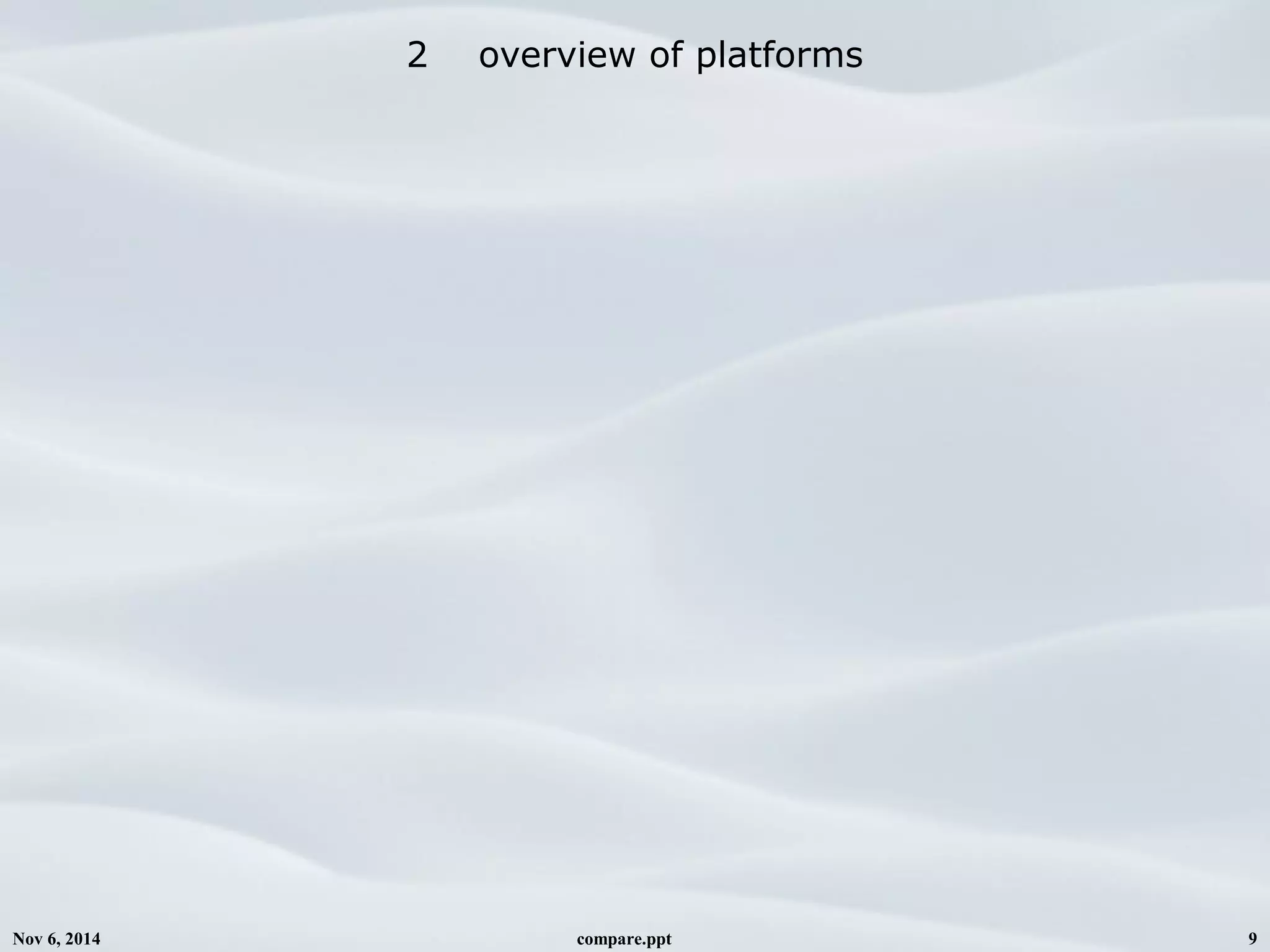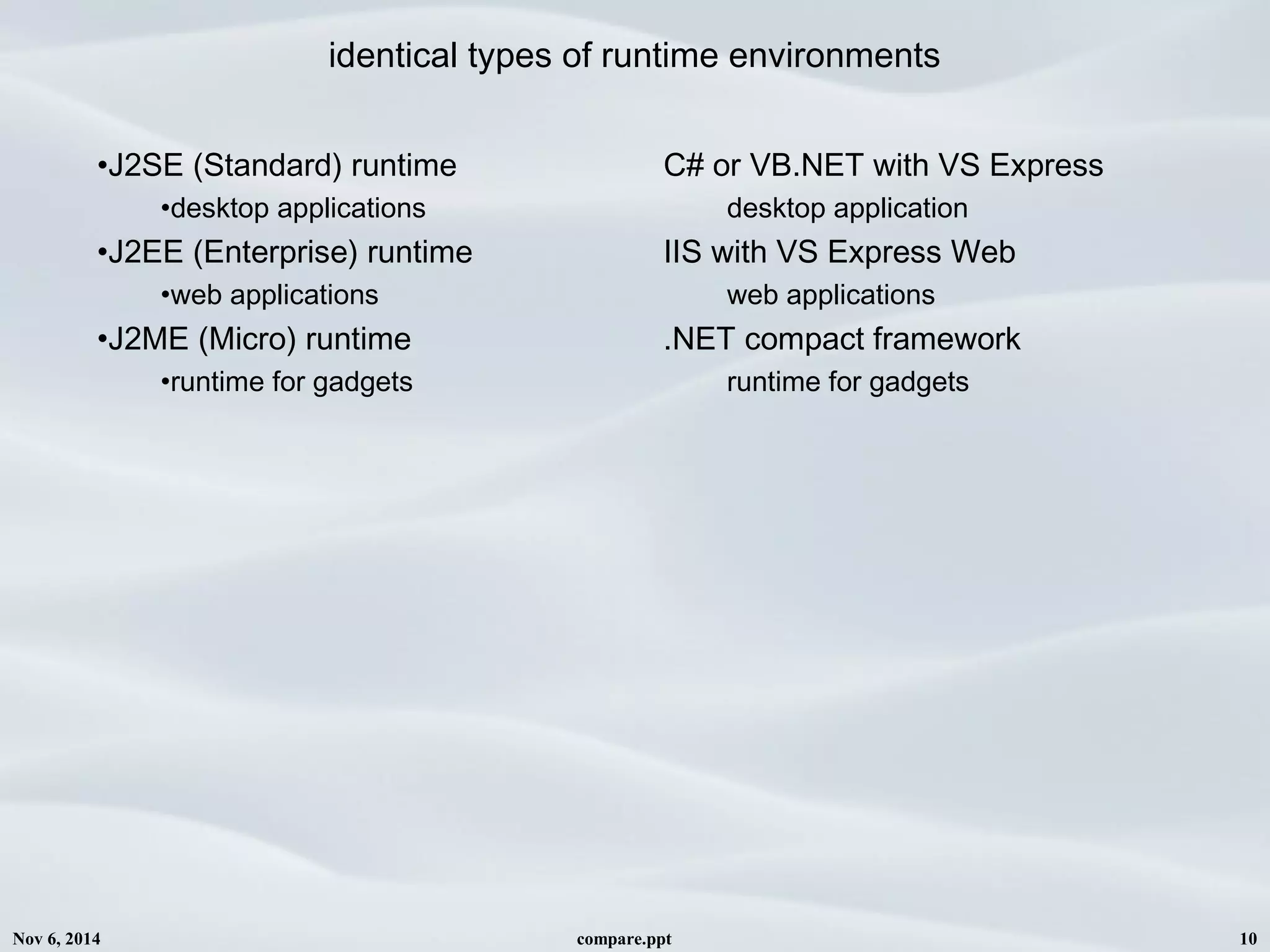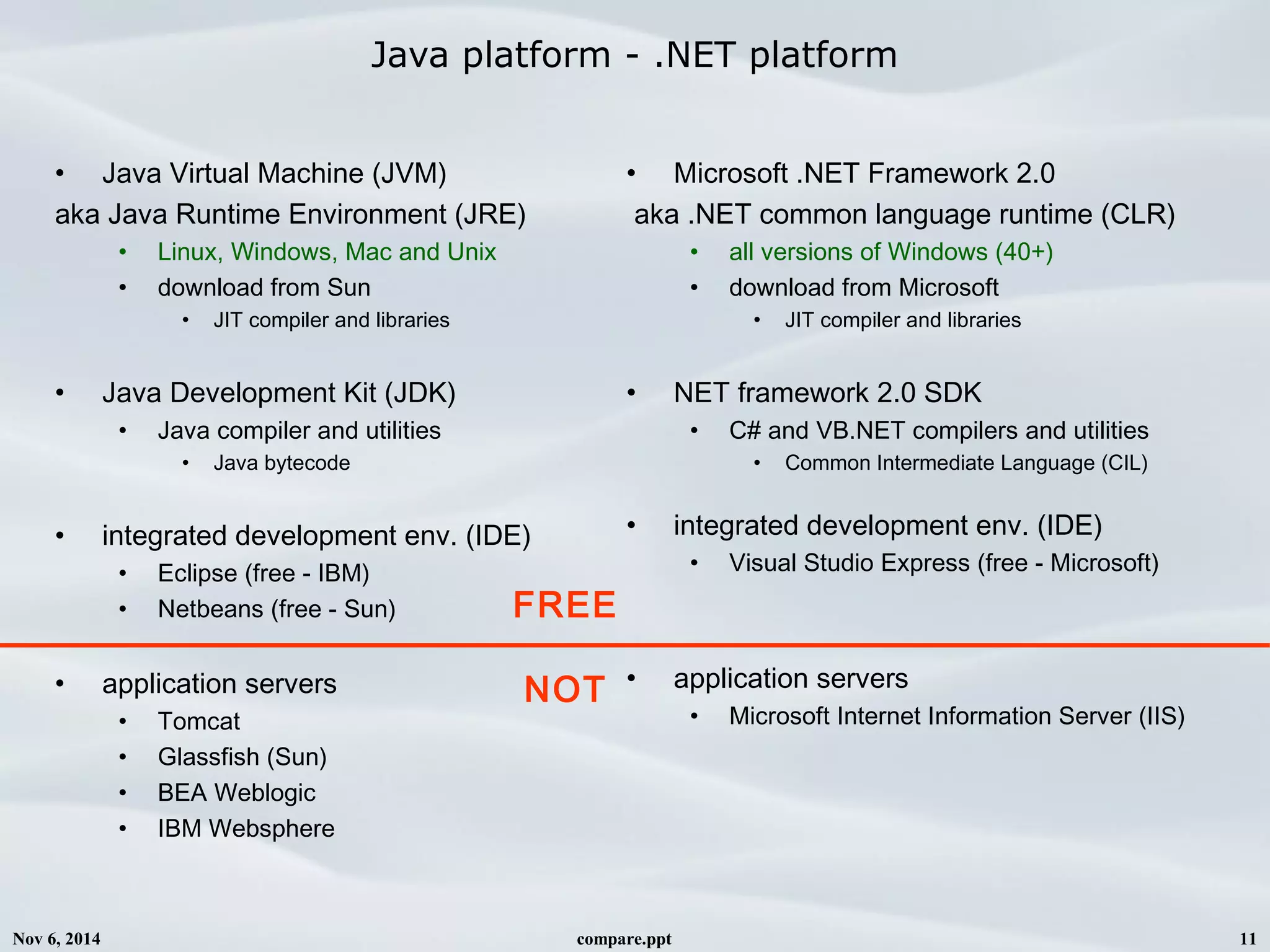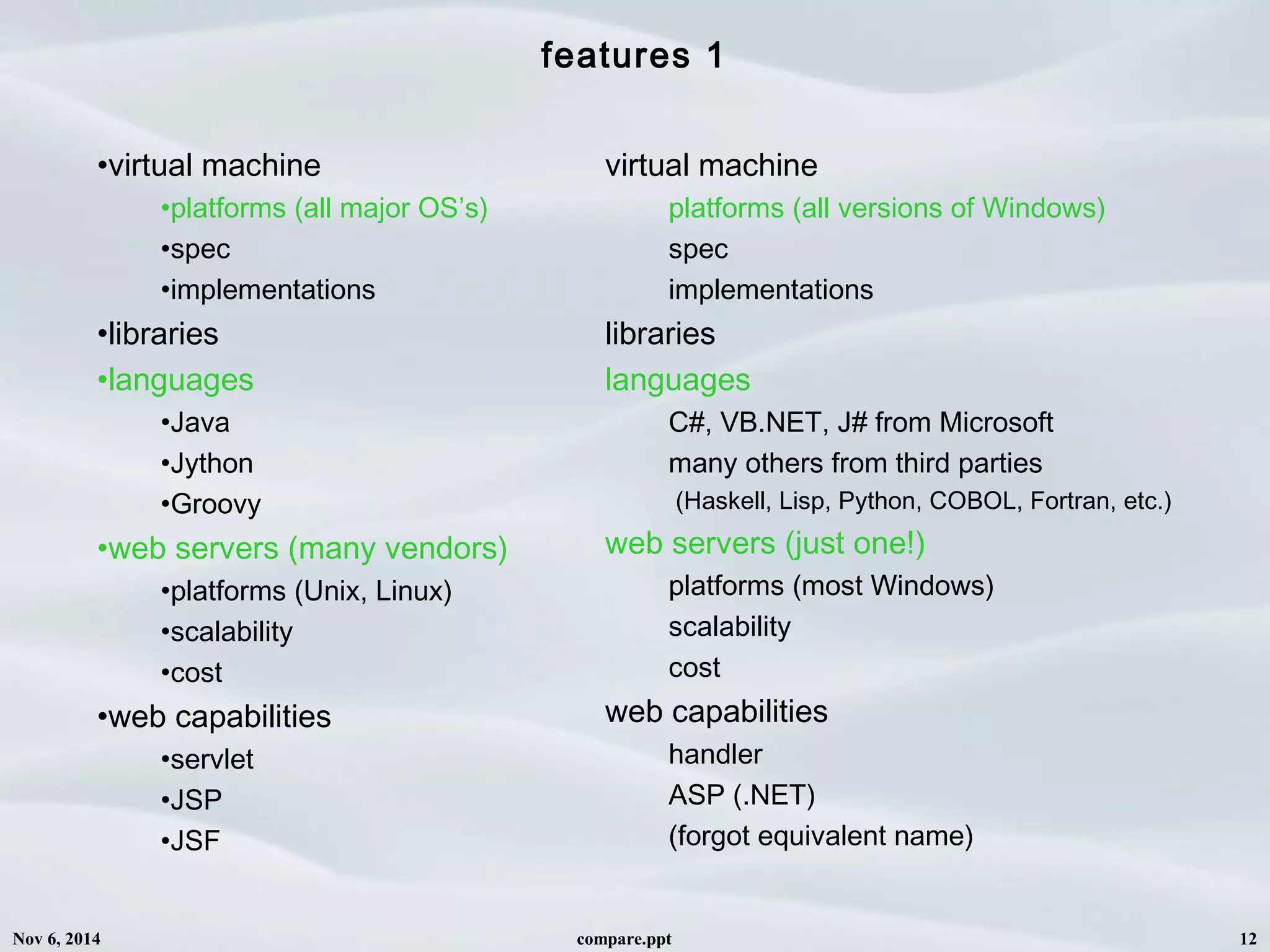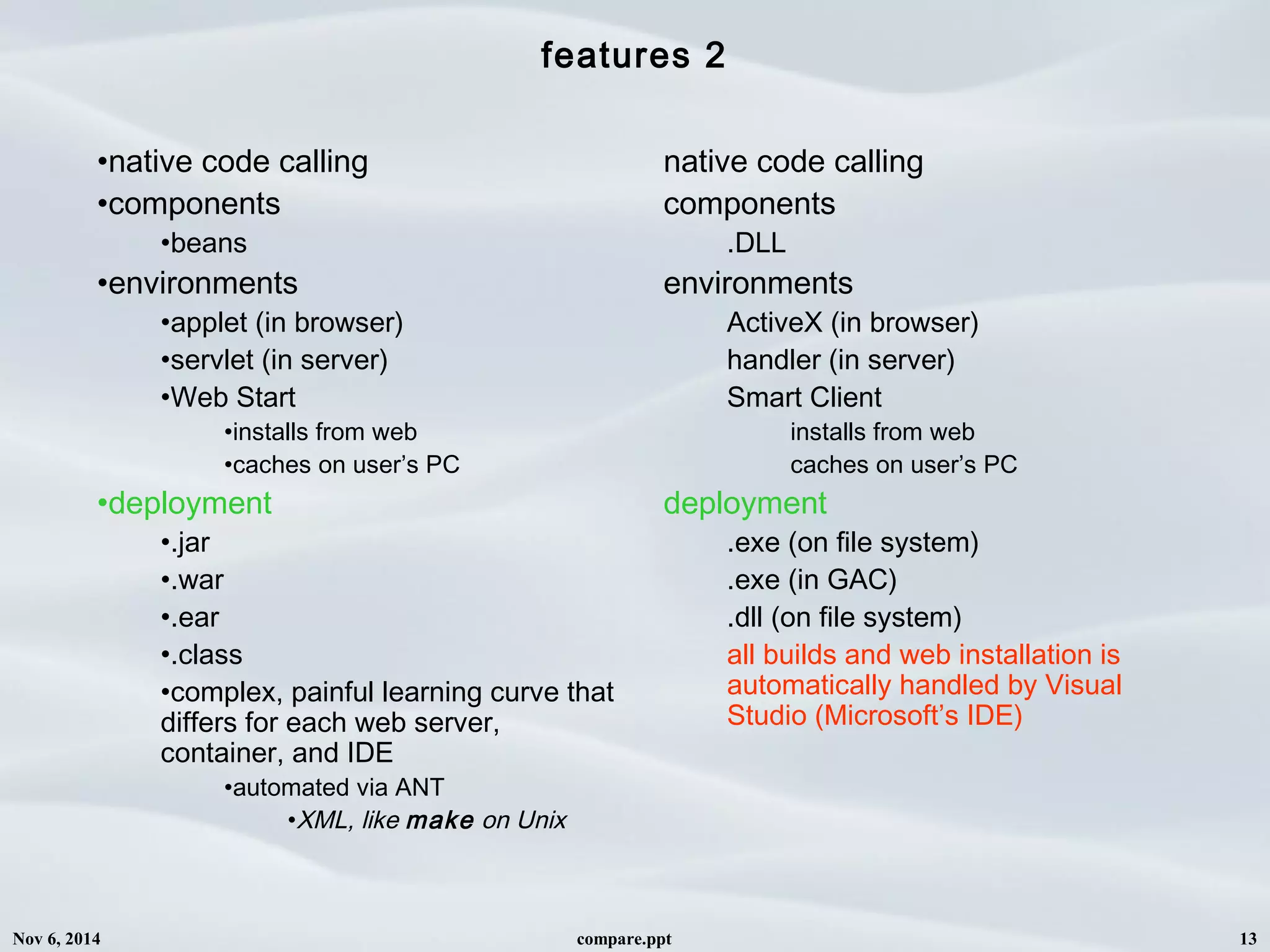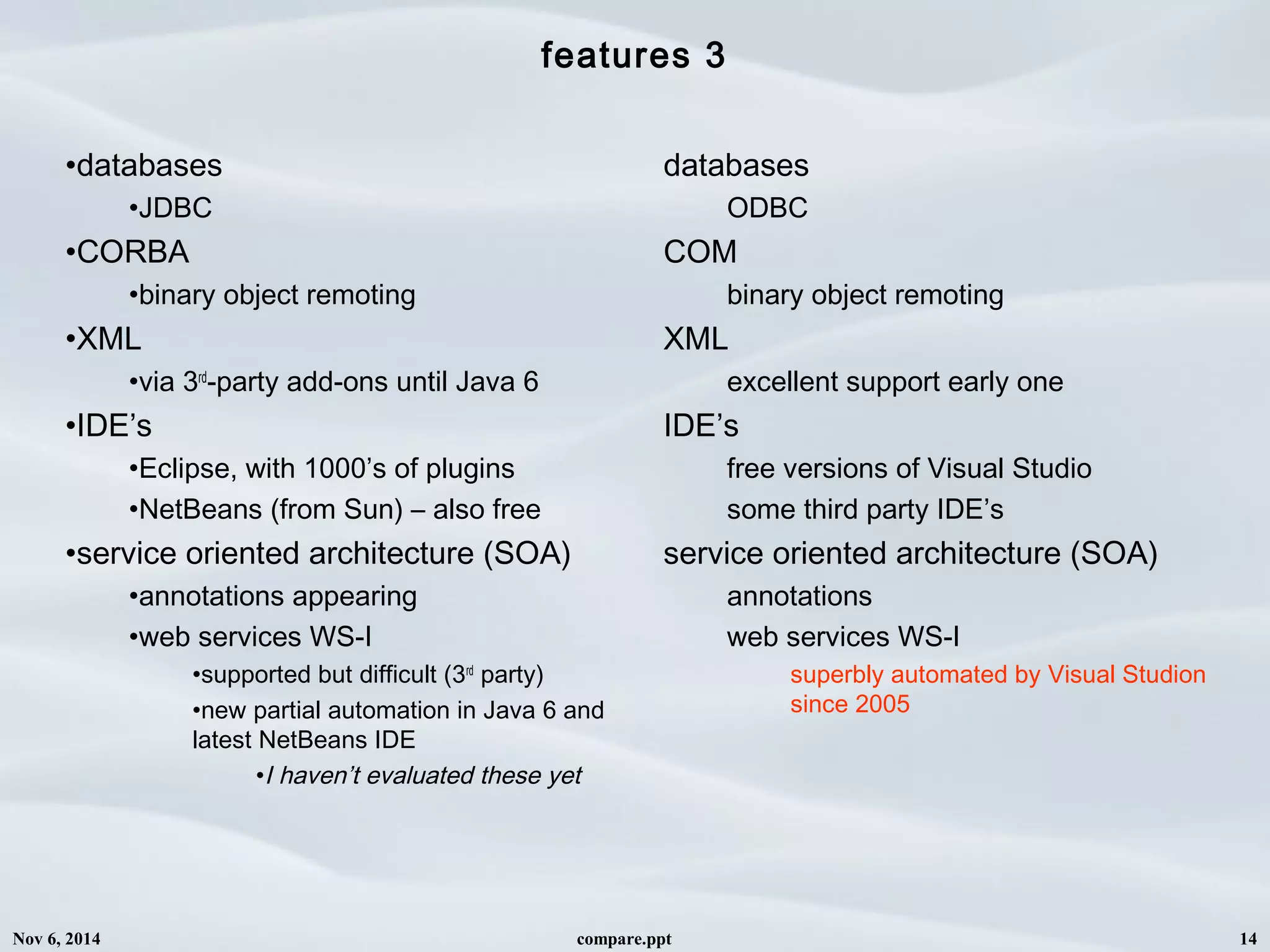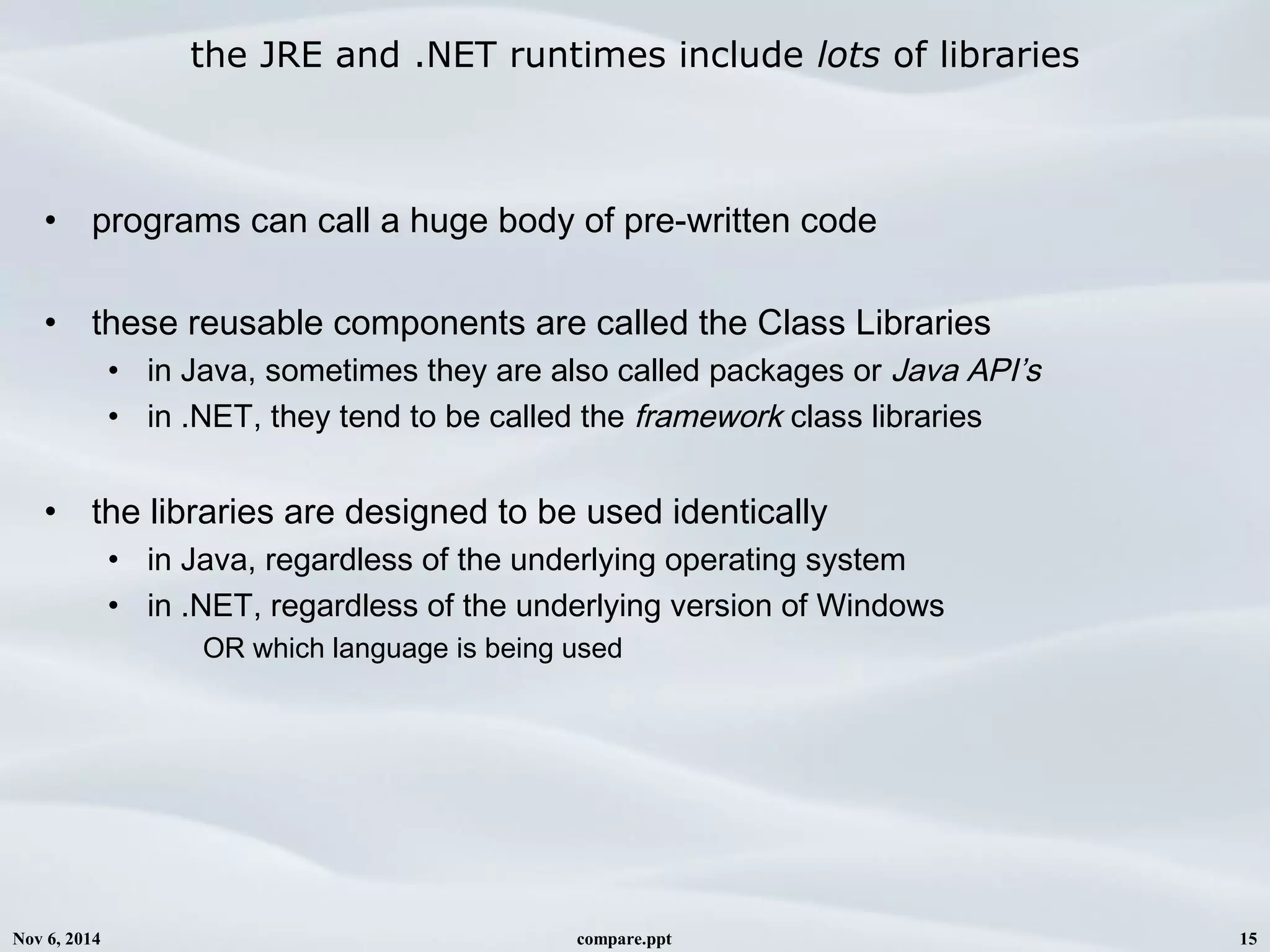This document compares Java and .NET platforms, highlighting their history, strengths, and issues. It discusses their respective runtimes, features, programming languages, and market shares, and emphasizes the differences in learning curves and application development environments. The document also details code examples and runtime characteristics for both platforms.
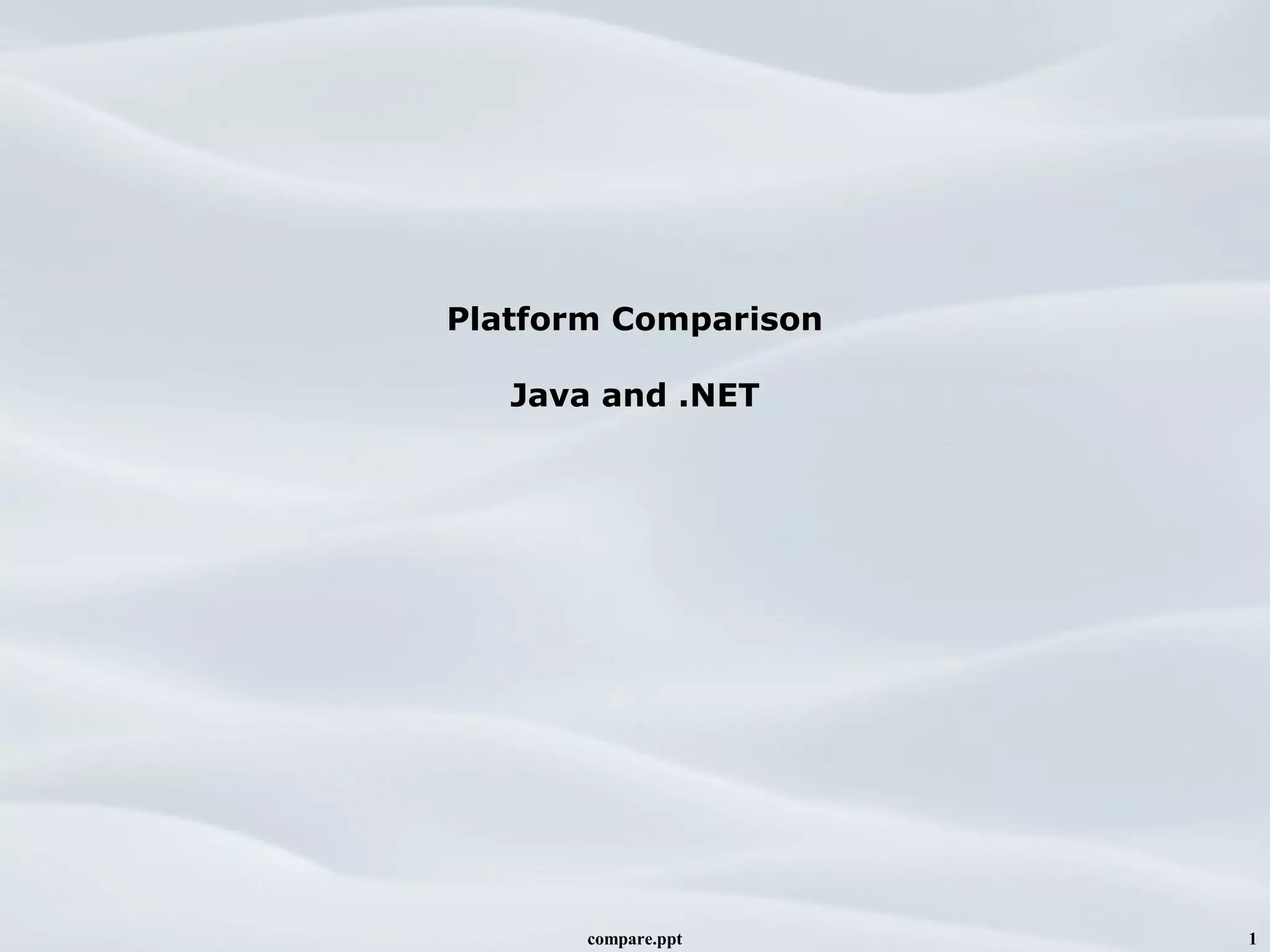
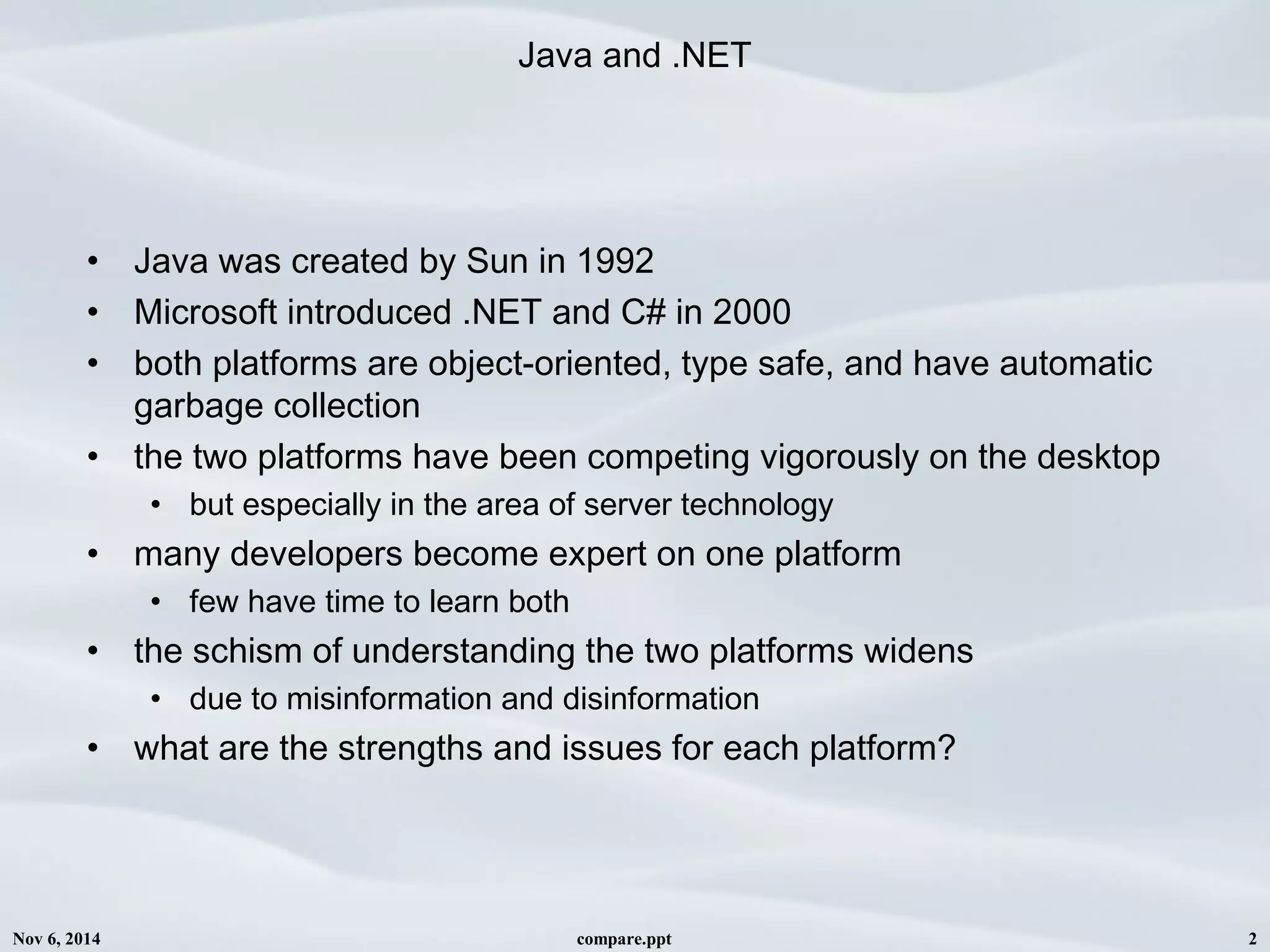
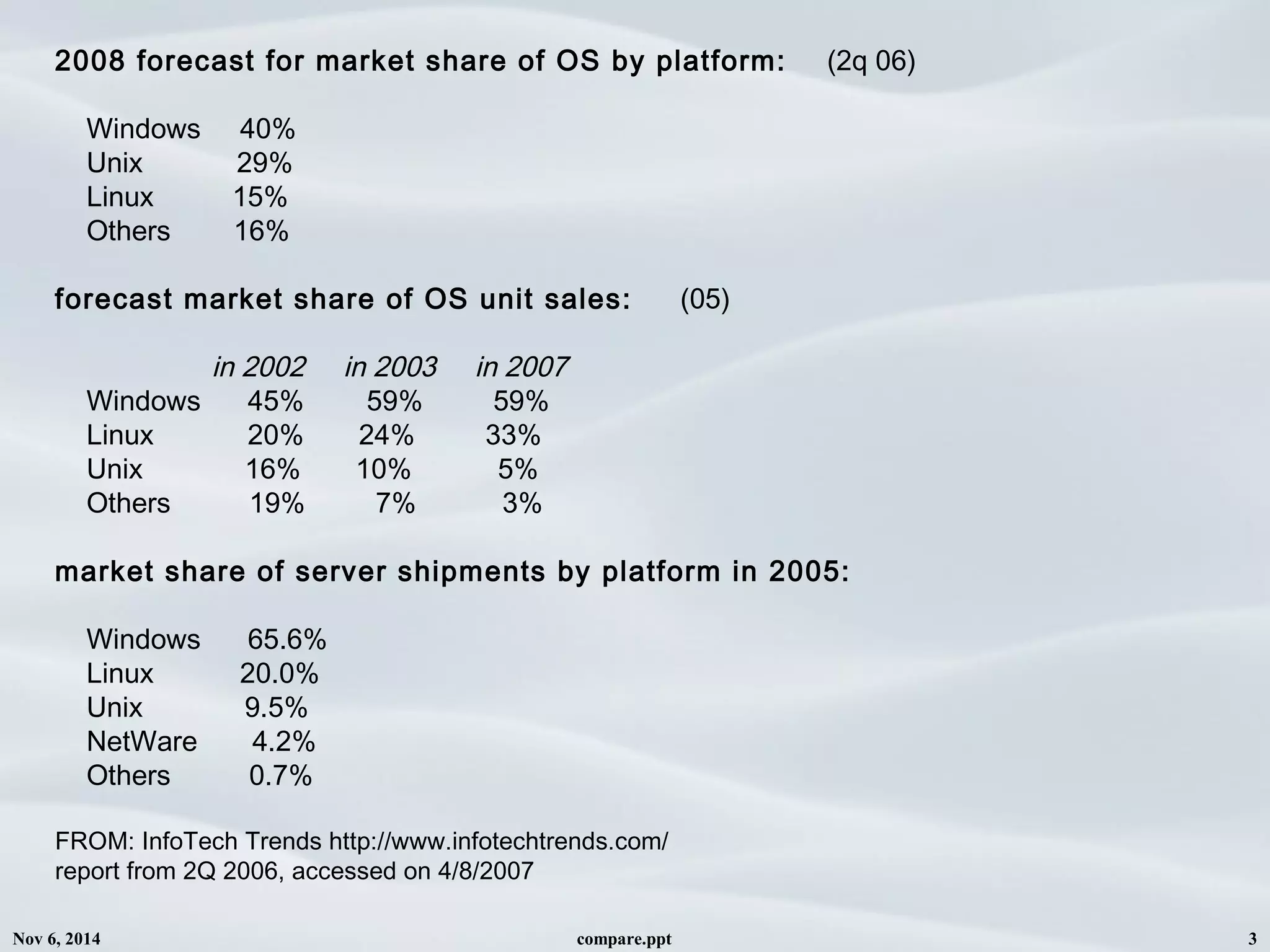
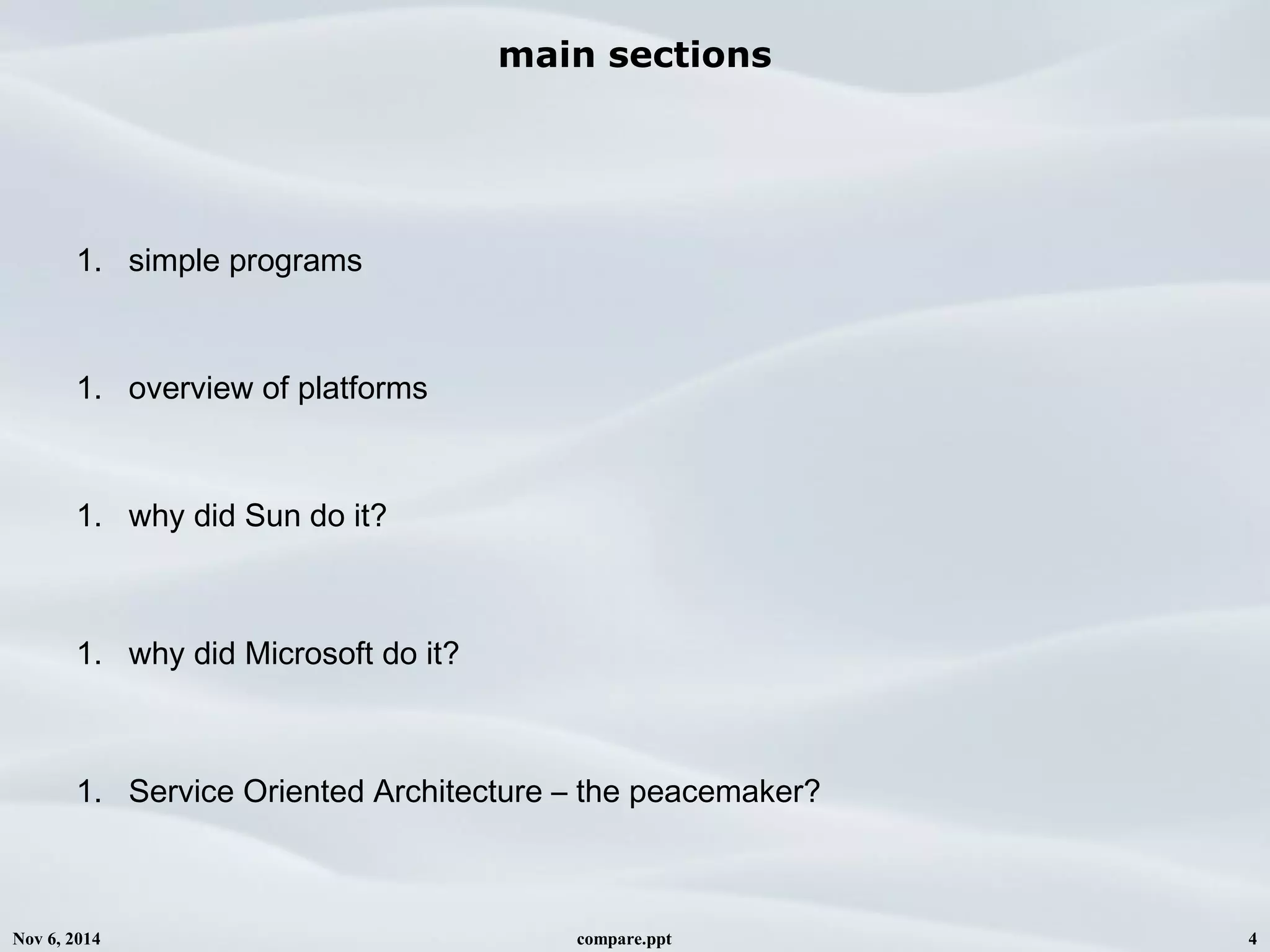
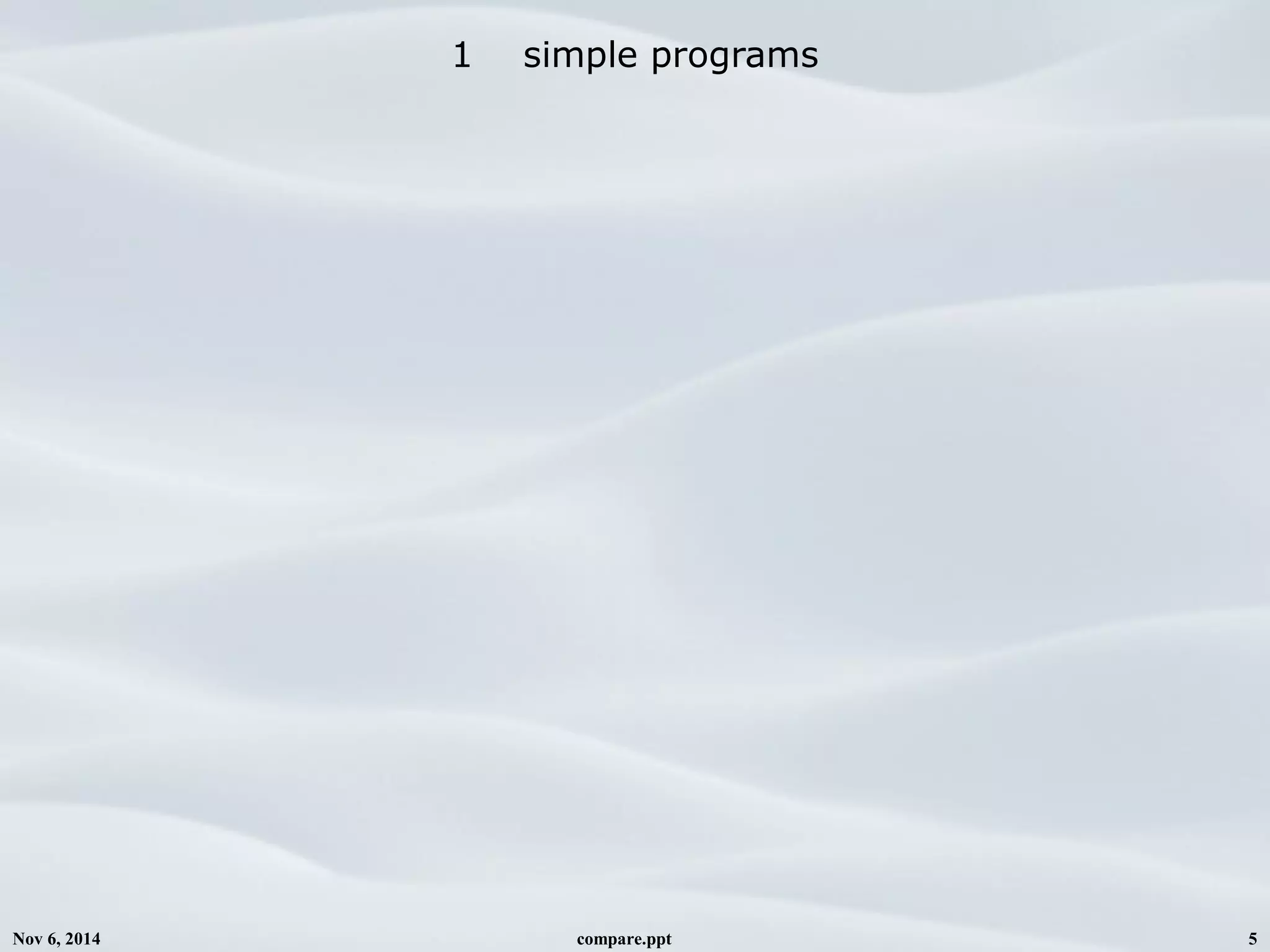
![Nov 6, 2014 compare.ppt 6
// Java
public class Hello {
public static void main(String[] args) {
System.out.println("Hello world in Java");
}
}
// C#
namespace Hello {
public class Hello {
static void Main(string[] args) {
System.Console.WriteLine ("Hello world in C#");
System.Console.ReadLine();
}
}
}
‘ VB
Module HelloWorld
Sub Main
System.Console.WriteLine(“Hello World in
VB.NET”)
System.Console.ReadLine()
End Sub
End Module
console programs](https://image.slidesharecdn.com/synapseindiajavaand-150107043441-conversion-gate02/75/SynapseIndia-java-and-net-development-6-2048.jpg)
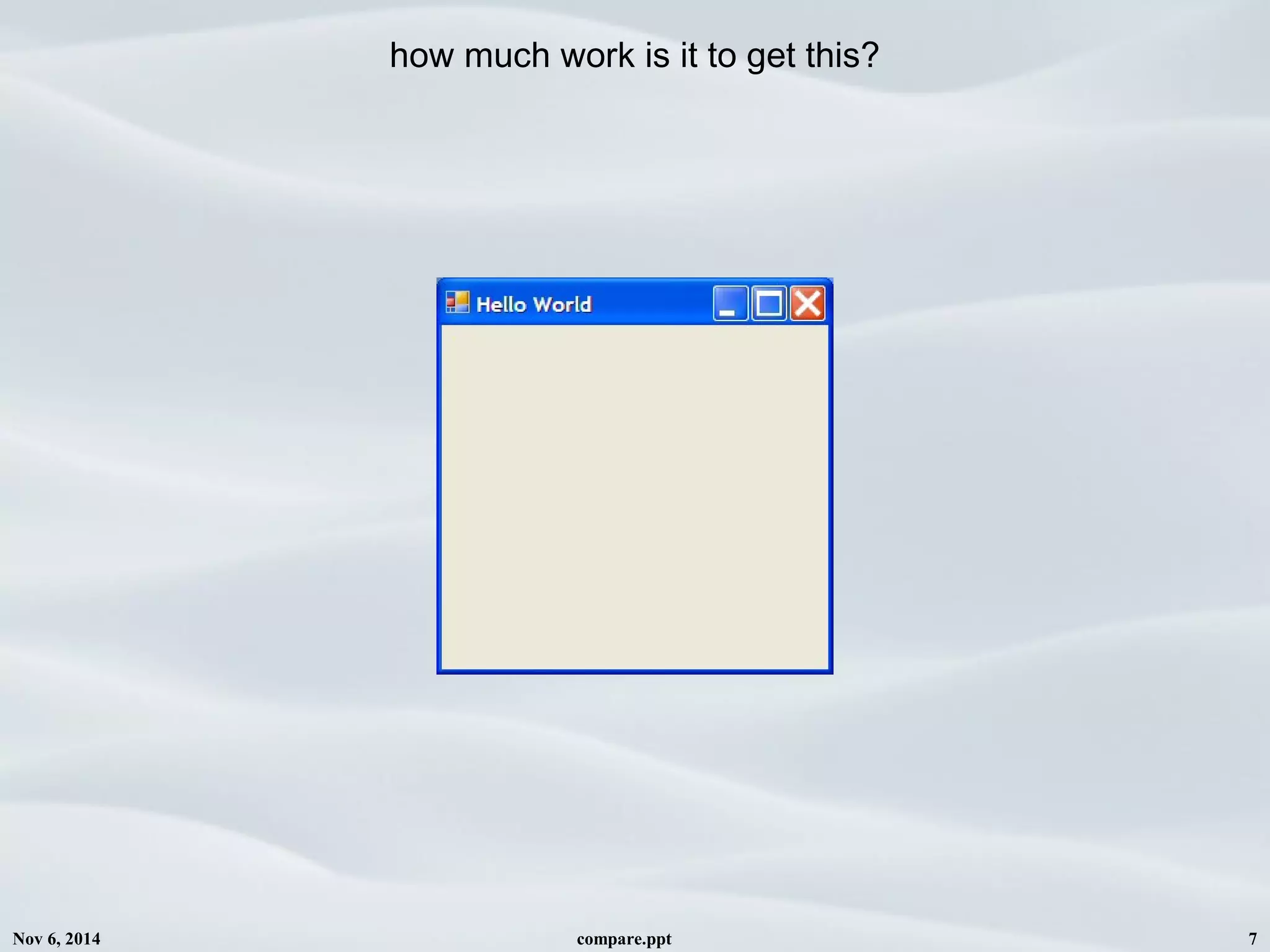
![Nov 6, 2014 compare.ppt 8
mininal window
import java.awt.*;
import javax.swing.*;
public class Hello extends JFrame implements Runnable
{
public static void main(String[] args)
{
SwingUtilities.invokeLater(new Hello());
}
public void run()
{
this.setSize(new Dimension(200,200));
this.setTitle("Hello in Java");
this.setVisible(true);
}
}
using System.Windows.Forms;
namespace TinyWindowApp
{
public class HelloForm : Form
{
static void Main()
{
Application.Run(new HelloForm());
}
public HelloForm()
{
ClientSize = new
System.Drawing.Size(200, 200);
Text = "Hello in C#";
}
}
}](https://image.slidesharecdn.com/synapseindiajavaand-150107043441-conversion-gate02/75/SynapseIndia-java-and-net-development-8-2048.jpg)
